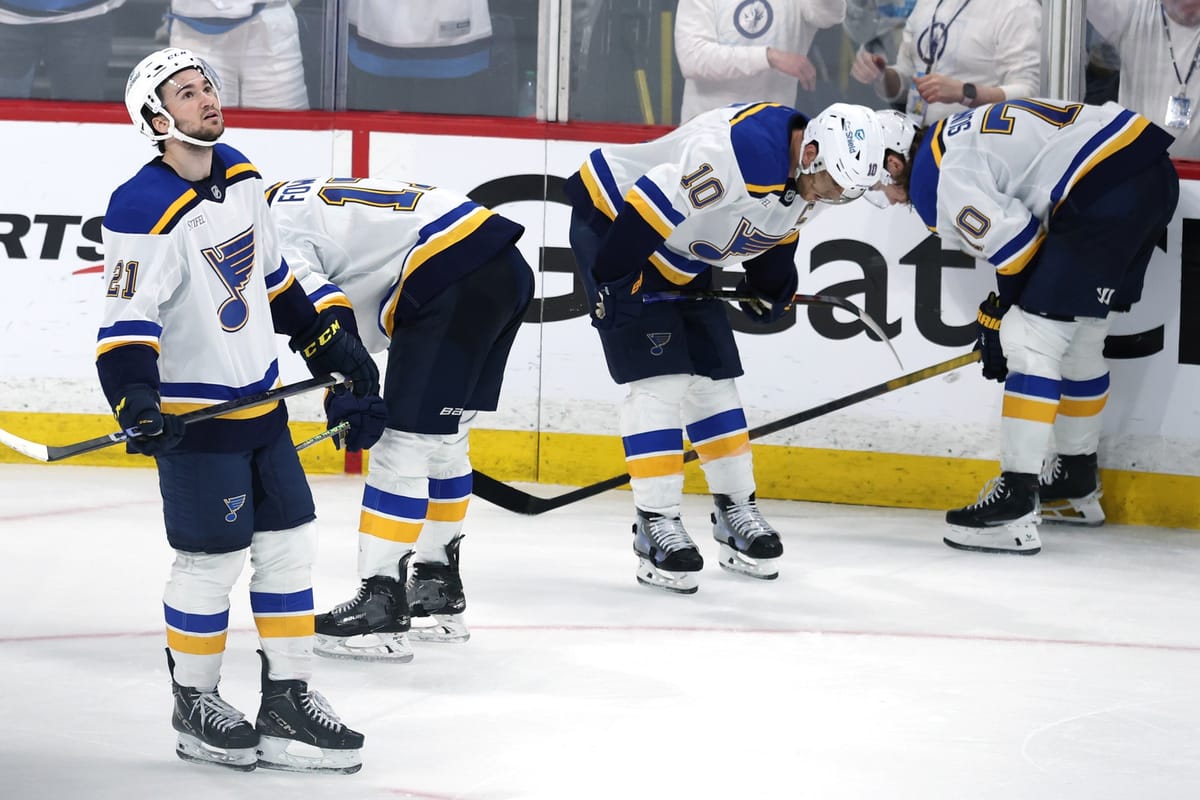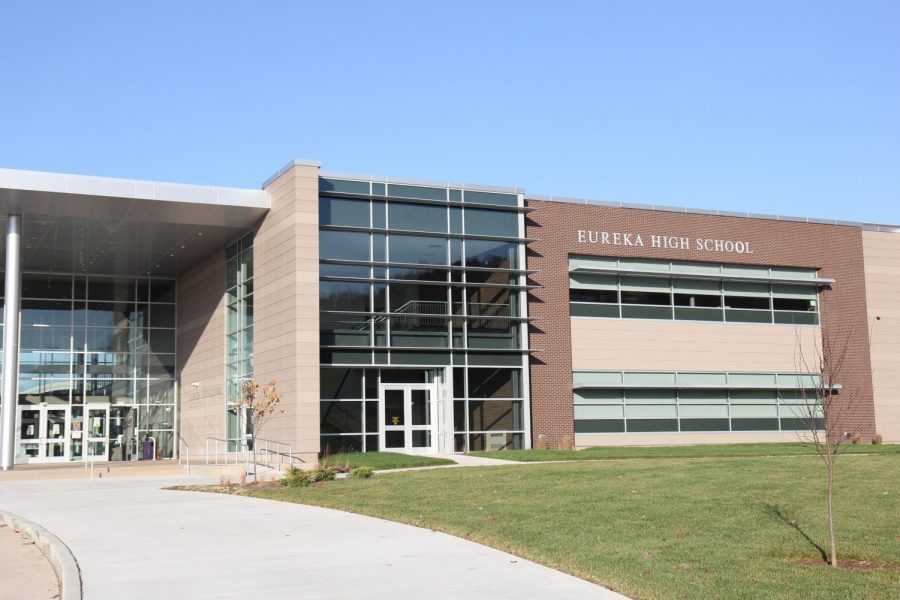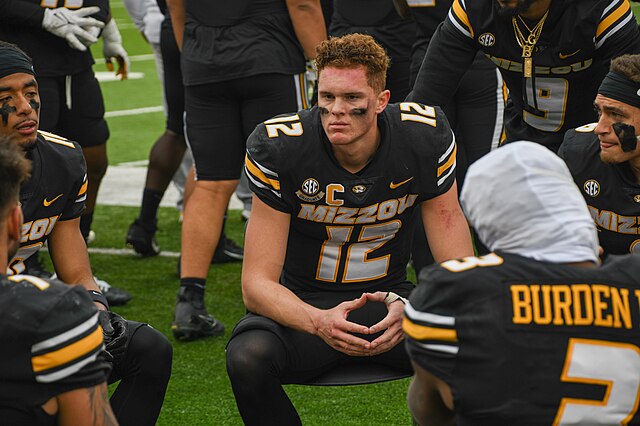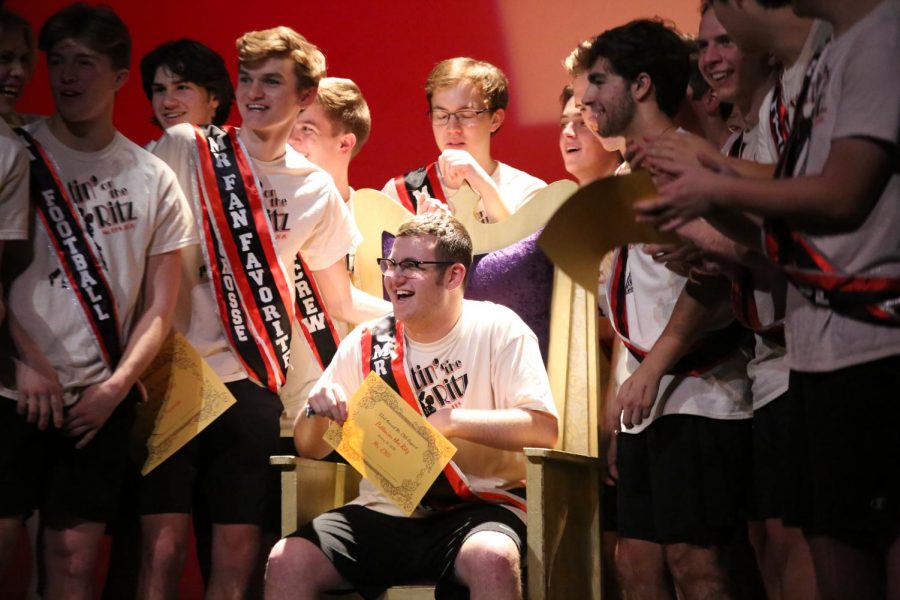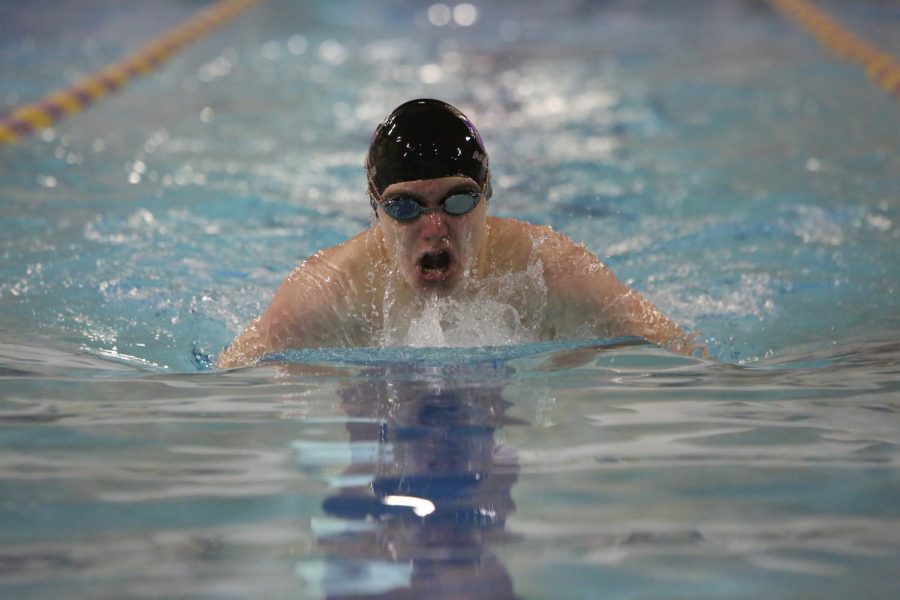Playing at a price
The Eureka Wildcats club hockey team celebrates their defeat of Fort Zumwalt West for the Founders Cup Championship at Queeny Park, Feb. 22. The Wildcats entered the bracket with a 5-15-1 record, but ultimately took the cup with their 6-1 win.
The club ice hockey team defeated Fort Zumwalt West 6-1 in an exciting match to win the Founders Cup Championship, Feb. 22. Ice hockey is one of the few club sports offered at EHS, along with boys lacrosse, rugby and water polo.
Between college exposure, a competitive environment and high-level training, club sports are highly-regarded as an essential step of development for aspiring collegiate and professional athletes. However, these sports come at the steep price of being both financially expensive and time-demanding.
Gus Mantia (11) estimates that he spent nearly seven to 10 hours per week training for soccer while playing for the U.S. Soccer Developmental Academy.
“We trained day in day out, almost every day right after school,” Mantia said. “It had a lot of commitment because training sessions were far away in different places at different times.”
The DA’s requirements are certainly rigorous, asking for a minimum of four training sessions each week as well as banning players from participating in high school sports.
Games are played in locations all throughout the United States. Mantia has travelled to states like Indiana, Michigan, Minnesota and Wisconsin just to play regular conference games.
While it is important for student athletes to improve their abilities, the time management of balancing such intense schedules can be difficult.
“It requires a lot of cooperation from my friends and obviously from the teachers, as well,” Mantia said.
Mary White, Orchestra, said that she takes about 15 to 18 hours out of her week to drive her son, Bennett Piña-White (10), to practice.
“It’s really time-consuming,” White said. “Sometimes I would like to just chill. My laptop goes with me and you can always get WiFi somewhere, so I work while I’m sitting there.”
Fortunately, hectic schedules become routine to athletes that are used to the time-crunch.
“I just get everything done as soon as I get home or during the school day,” Piña-White said
Although schedules can be taxing, discipline and efficiency are something that both school and sports demand.
“It can be hard but it’s what I really care about so I have to make sure I have time for both,” Hannah Holtz (9) said.
However, the cost of playing a club sport can be a major drawback. Parents with children who participate in club sports spend $100 to $500 a month towards their child’s team, according to a survey by TD Ameritrade.
The increasing price of “pay-to-play” club sports can even be attributed to a decrease in participation. Between 2009 and 2014, there was a nine percent drop in sports involvement, according to the Sports and Fitness Industry Association.
Not only do the expenses lead to quitting sports at a young age, but they also diminish athletic opportunities for children of low-income families.
About 51 percent of families that make over $60,000 per year have a teenager playing sports, while families that make less than $60,000 only have a 30 percent participation rate, according to a study by C.S. Mott Children’s Hospital.
Additionally, the study reports that 15 percent of low-income parents have forced their children to give up sports because of the rising prices, and nine percent of high-income families have done the same.
Last year, the average American household had an annual income of $62,175, according to Sentier Research. Given that families need enough money to afford housing, food and healthcare, paying for children to play sports is not a priority.
Luckily, there are sports clubs that offer programs to help these underprivileged athletes reach the next level.
Local soccer club St. Louis Scott Gallagher provides multiple financial assistance programs where families in need can work off their club fees and allow their children to play soccer, according to Elite Girls Program Director Shaunna Brandt.
“Additionally, SLSG has a Living Legacy Scholarship fund in which it awards club fees to players who possess certain qualities that reflect good character while also having a financial need,” Brandt said.
Piña-White’s team even donates part of their club dues toward helping refugee children in the St. Louis area play soccer.
“We pay about $1,500 for the season,” White said. “I like knowing that part of that is helping kids who otherwise wouldn’t get to play.”
The benefits of this program go far beyond just helping children play.
“When Bennett is on the field, he’s on the field with people from all over the world,” White said. “I just think that is a truly awesome experience. It’s a great way for them to assimilate into culture here while still retaining the sport that they’ve grown up playing.”
Club sports also offer the benefit of college exposure that would not occur in a recreational setting.
“Having been on both sides of coaching, the club environment is absolutely crucial,” Brandt said. “Not only does club soccer provide the best training environment during eight to nine months of the year, but it offers opportunities to participate in college showcase events where players can be seen and recruited by college soccer coaches.”
In a 2015 National Collegiate Athletic Association survey, 21,233 college athletes were asked if they played club sports before playing in college. With the exception of football and track and field, an overwhelming majority reported having played on a club team before being recruited.
The highest percentage were soccer players, with 95 percent of women and 93 percent of men reporting playing club before going collegiate.
The lowest reported sport was ice hockey, which had 91 percent of women and 81 percent of men competing on club teams. Ice hockey is also considered to be one of the most expensive sports.
“It’s a lot of time and money because you have to invest in the gear,” Mitchell Gabel (12) said. “It’s more expensive for hockey because ice time is really expensive.”
But at the current price of college, those expenses may be worth it
“My parents said that it’s an investment toward playing in college,” Mantia said.
Within the last 10 years, the price of tuition fees and room and board have increased from an average of $38,720 to $48,510 at a four-year private university, according to College Board. Within public universities, the price has gone from $16,460 to $21,370.
College tuition adjusts with the current state of the U.S. economy. The last reported inflation rate was 1.6 percent as of January 2019, according to the Bureau of Labor and Statistics. Paired with inflation rates, the cost of a four-year public university priced at $16,460 in 2009 would be equal to $19,265.77 in 2019. Nonetheless, with the true price of college hovering around $21,370 in 2019, there has still been a $2,104.23 increase.
Madyson Pogue (11) approximated that her family pays about $5,000 for her to play club volleyball and club softball. Pogue is committed to play softball at Southern Arkansas University starting in the 2020-2021 school year.
“The money that you pay gets your skill because it’s more time,” Pogue said. “You’re challenging yourself more, and you’re learning more. I feel like the money definitely will benefit you in the end if you decide to play in college because you can get that money back towards your education later.”
Division One and Division Two sports programs spend about $2.9 billion on scholarships for recruited athletes, according to the NCAA.
Earning athletic scholarships reap other benefits besides covering part of the cost of college.
“By getting a college degree you’re learning a skill-set,” Jeff Buckman, career and college counselor, said. “Theoretically it open more doors in case you apply for a job that requires it.”
Regardless of whether athletes choose to play in college or not, club sports provide social, educational and career skills that last a lifetime.
High schoolers who play sports are more likely to have higher grade-point-averages, standardized-test scores and attendance rates, according to the National Federation of State High School Associations. The same study also found that women who play sports are more likely to find success in future careers, with 95 percent of the women working at the surveyed companies having played a sport in high school.
Although club sports take time and sacrifice, they continue to be a major outlet for players to find what they are passionate about and strive to get better.
“It’s such a healthy thing, especially when you find the right place to play,” White said. “It’s not only healthy for your body-it’s healthy for your mind, it’s healthy for your mental health, it’s just so good for you.”
Your donation will support the student journalists of Eureka High School - MO. Your contribution will allow us to purchase equipment and cover our annual website hosting costs.

This is Brown's first semester on staff where she serves as a reporter for the EHS-hub. Brown enjoys playing soccer, hanging out with friends, and...

This is Ethan's seventh semester on the News Production staff. In his free time, he enjoys taking photos, going to concerts and hanging out with his friends....






